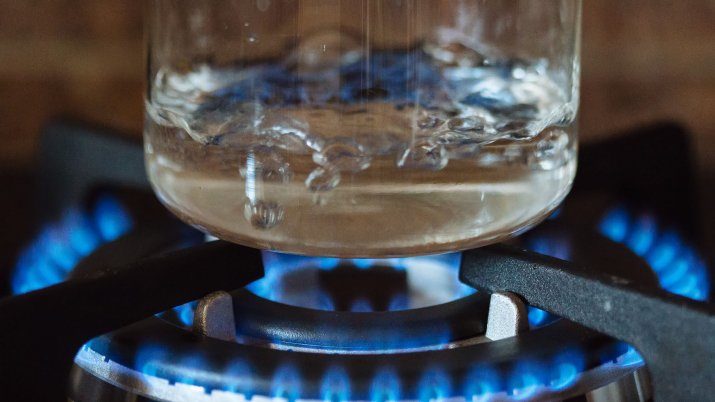A team of scientists at Uppsala University in Sweden have just successfully used an X-ray laser to heat room temperature water to a whopping 180,000 degrees Fahrenheit (100,000 degrees Celsius) in less than a tenth of a picosecond. That would be about a millionth of a millionth of a second, and it was done in a way that the water didn't vaporize into steam at such ridiculously high temperatures.
To be exact, it took about 75 femtoseconds for the water to go from a glass of tap water into something several times the temperature of the sun's surface. Since it's not easy to find a laser with that much power behind it, the experiment took place at the SLAC Accelerator Laboratory at Stanford University; the researchers just published their findings in the Proceedings of the National Academy of Sciences.
So, how does X-ray heating work?
X-ray heating works pretty differently than a normal stove like whatever's attached to your kitchen. A stove simply transfers heat to water molecules to make them shake faster (after all, "fast moving molecules" is basically what heat is), but X-rays are a little more invasive to water molecules - flashes from the laser can actually force the electrons out of the molecules, causing a sudden reaction where the molecule shakes violently.
According to one of the study's authors, Carl Caleman from Uppsala University, who explained it this way in an official statement from the university:
It is certainly not the usual way to boil your water. Normally, when you heat water, the molecules will just be shaken stronger and stronger. Our heating is fundamentally different. The energetic X-rays punch electrons out of the water molecules, thereby destroying the balance of electric charges. So, suddenly the atoms feel a strong repulsive force and start to move violently.So far, there are only a few practical advantages to using X-ray flashes to violently dismantle and superheat water molecules. It'll be useful for more experiments involving liquids, although whatever's blasted with the laser will be destroyed in the process. But hey, you are blasting it with a laser, so you shouldn't expect any different results.
But there's not much use the average person could get from this, so don't go expecting X-rays to replace a stove or electric kettle anytime soon.




Reader Comments
formajor concern; to make matters yet worse, I sometimes double up on a word, as you can see. And I'm pigeon-toed, have wingy ears and buck teeth; oh yes, almost forgot, and warts — lots of 'emAnd yes, bold -and- italic. The reason: simple italic doesn't have much 'jump' off these pages.
And, if you look at some actually decent typeface families you'll find 'italic' in 'regular', 'semi-bold' and 'bold' faces.
For the typographically challenged: this here '—' (as seen above) is an 'em dash', which the Windows Character Finder will get for you any old time at all. Or, you can hold down the 'alt' key and type '0151' on the numeric keypad.
Getting back on point: this is a poorly written article, the guy needs lessons. Period.
If it was any significant amount of water, it would simply explode. If it did not, then that was like with this thermosphere or solar corona. A thermodynamical creative accounting.